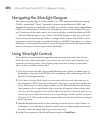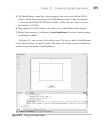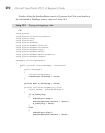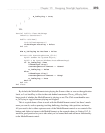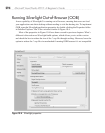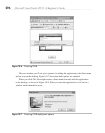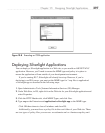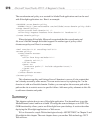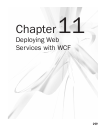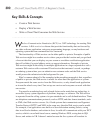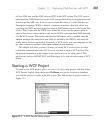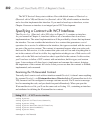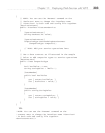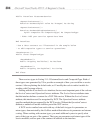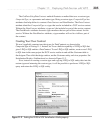
298 Microsoft Visual Studio 2010: A Beginner’s Guide
The crossdomain.xml policy was created for Adobe Flash applications and can be used
with Silverlight applications too. Here’s an example:
<!DOCTYPE cross-domain-policy
SYSTEM "http://www.macromedia.com/xml/dtds/cross-domain-policy.dtd">
<cross-domain-policy>
<allow-access-from domain="*" />
<allow-http-request-headers-from domain="*" headers="*" />
</cross-domain-policy>
When designing Silverlight, Microsoft recognized that the crossdomain.xml
file wasn’t flexible enough and added support for another type of policy called
clientaccesspolicy.xml. Here’s an example:
<?xml version="1.0" encoding="utf-8"?>
<access-policy>
<cross-domain-access>
<policy>
<allow-from http-methods="*">"
<domain uri="*"/>
</allow-from>
<grant-to>
<resource path="/" include-subpaths="true"/>
</grant-to>
</policy>
</cross-domain-access>
</access-policy>
This clientaccesspolicy.xml listing allows all domains to access all site content that
isn’t already secured by other means. You can restrict access by replacing the * in the
domain uri with an allowable domain. Further, you can replace the resource path with a
path on the site to restrict access to specific folders. Add more policy elements to this file
to add more domains and paths.
Summary
This chapter explains how to run a Silverlight application. You learned how to use the
MediaElement control and how to build UIs using the same techniques as in WPF
. The
OOB functionality allows you to run Silverlight from your desktop. A
section describes
deploying the Silverlight application to a Web server.
We’ve discussed a couple Web technologies already: ASP.NET MVC in Chapter 9 and
Silverlight in this chapter. The next chapter shows you another Web technology: WCF
Web services.



